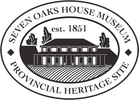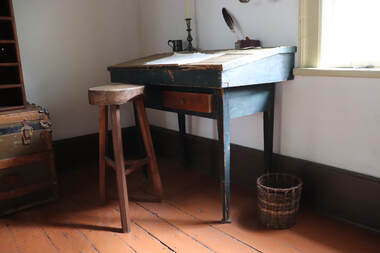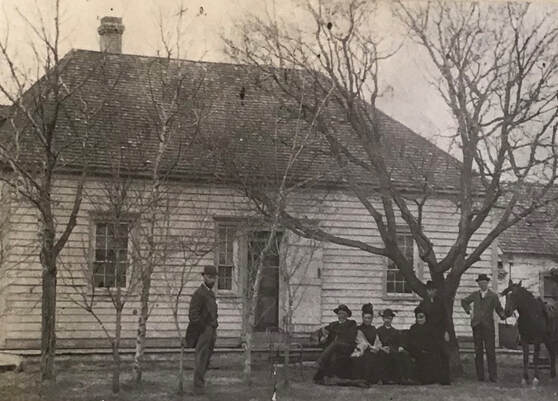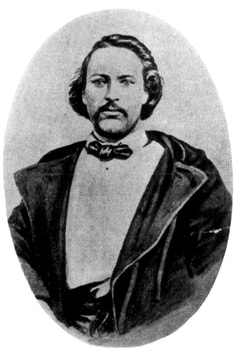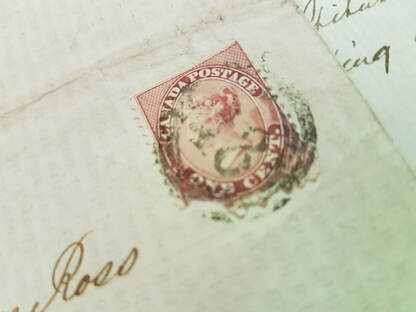The first post-office (est. 1855)
Introduction
The Ross House, formerly known as Brookbank in the 1850’s, was the first post office in Western Canada. In 1855, William Ross was appointed postmaster for the Red River Settlement and ran the office out of his home. The average annual salary for the position was 5 pounds sterling to handle thousands of letters, papers, and parcels each year.
How the mail system workedIn order to send a letter, it first had to be weighed to determine the cost to send it. The price to send a letter in North America was anywhere from one to ten cents. Addresses in the 19th century were not as detailed as they are today, they would simply be addressed by the settlement name followed by British North America and possibly a notable landmark. The most important thing to include when addressing a letter was the person's name, people would all known each other in smaller communities and it would be easier to find out if you had recieved a letter or not.
Before the post office, the only way the settlement received mail was through the Hudson’s Bay Company and its employees willing to drop something off when they passed through; they would transport them via dog sled or boat. This system meant that mail could only be delivered once or twice a year, generally in the winter and summer. A quote from the Nor'Wester in 1860 stated that wars would be fought and settled before the Red River Settlement would know about the first musket shouldered or cannon fired. The role of the ross familyWilliam Ross as appointed as the settlement's first post-master in 1855. He was paid 5 pounds annually to handle the thousands of letters, newspapers, and parcels that passed through the settlement each year. When William died of tuberculosis in 1856, his brother James briefly took over as post-master in 1860 until he returned to Toronto. By the time James was in charge, the postal services were not as busy, handling only around a thousand letters, newspapers, and parcels combined.
|
Elzear GouletMonsieur Elzear Goulet was the first postman for the settlement, traveling from here to Pembina, North Dakota twice a month. This journey was 191 km, and Goulet would do it either by horseback or dog sled depending on the season. Unfortunately, in 1870, Goulet was murdered by the Wolseley expedition for his role in Riel’s government. Today there is a street in Ste. Boniface named after Elzear Goulet for his role in the city and provisional government.
The Importance of the postThe introduction of the mail service allowed for the settlement to play a larger role in economics and politics, as well as to establish a cultural significance to broader society. The postal system allowed for people to connect with others outside of the settlement, making the secluded prairies feel less lonely and isolated from the rest of the world.
|
